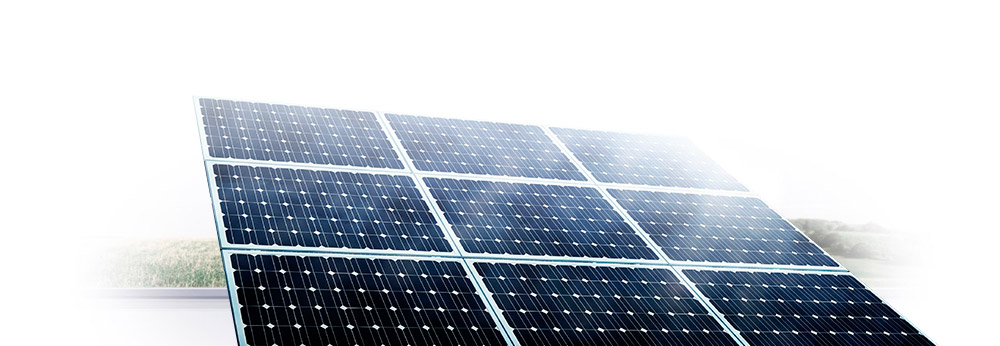Solar Photovoltaic
Read & Errington have experience with designing and installing Solar Photovoltaic.
What is Solar Photovoltaic?
Solar panels capture the sun’s energy using photovoltaic cells. These cells do not require direct sunlight to work and continue to generate electricity on cloudy days. The cells convert the sunlight into electricity, which once converted into AC can be used to run household appliances, lighting and in some cases even heat your hot water. We supply and/or install Solar PV and we also have working Solar PV panels at the showroom for you to view should you require further information.
How Solar PV Works?
Using solar electricity requires the conversion of direct current (DC) into alternating current (AC); solar inverters are used to make this conversion.
The Benefits of Solar Photovoltaic
- Cut your electricity bills. By using the electricity generated from your solar.
- Get paid for every KWH of electricity you generate, even if you use it all.
- Sell electricity back to the grid.
- If your system is producing more electricity than you require, you can sell the surplus back to the grid.
- Cut your carbon footprint, Solar electricity is a clean renewable energy.
- Does not release any harmful carbon dioxide or pollutants.
- A home using a solar PV system can save over a tonne of carbon per year.

System Types
A one size fits all approach to Solar is not always possible if you wish to create the best results for your system, This said the most efficient solution may not always be the best in respect of your return on investment.
Traditional String Inverter System
Most low cost Solar Installations will use a conventional string inverter combined with polycrystalline or low cost mono panels – your panels are connected in a series to form an array much like having one large panel sitting on your roof. The solar panel array is then connected to a single Inverter usually located in your loft.
In a basic string system the overall performance of the system is defined by the maximum output from the poorest performing solar panel.
Domestic installations tend to face several potential issues affecting performance of the whole string, even if the other solar panels are performing to their maximum power output.
Traditional String Inverter System with MPPTs
MPPT stands for Maximum Power Point Tracker. It is circuit (typically a DC to DC converter) employed in the modern quality branded photovoltaic inverters that Read & Errington use. It’s function is to maximize the energy available from the connected solar module arrays at any time during its operation.
An inverter without an MPPT circuit will result in poor operating conditions between the string of modules and the inverter.
The MPPT circuit attempts to drive the operating point of the inverter to the maximum power point of the array, resulting in the highest energy harvest.
Dual Tracking Inverters
A dual tracking inverter splits the strings within the solar system array. This becomes useful if you have a split roof however the inverter still cannot ‘see’ into a string to monitor and control what individual panels are doing. This means that your system is not taking full advantage of all the power produced by your panels, which in turn means higher cost per watt of your system and extended payback periods for your solar investment.
Solar Edge Power optimizer Technology
Power optimizers are designed to increase the power yield of solar modules. Attached to every module in an array the optimisers then form a string that leads to a central inverter at the end.
The benefit comes when some modules may be soiled, shaded, or degenerating faster than others. Rather than a poorly performing module dragging down the entire array’s performance, optimizers perform maximum power point tracking (MPPT) at module level before sending the optimized voltage to a central inverter to convert from DC to AC.
When MPPT is applied to each individual panel, as opposed to the solar system as a whole, performance will naturally increase.
Since the solar edge inverter is not exposed to high power and heat loads as central inverters are, they also tend to last significantly longer. The standard guarantee is 12 years and they will continue to produce the peak power from day 1.
Corporate Solar
With electricity costs constantly rising, investing in solar PV is a great opportunity for you to protect against rising bills, help maintain your competitive edge over others exposed to rising costs and make extra income through the use or sale of your generation to tenants.
If your business operates throughout the weekend, as well as the week, the savings that can be made increase by up to 40% making it an easy decision. Read & Errington have helped many companies gain a competitive edge by generating their own electricity on site, and we’re perfectly placed to do the same for you.
Our team will ensure your system is custom designed to maximise returns and meet your specific requirements.
Installing a Solar PV system will allow you to:
- Save on running costs and protect your business against future price rises.
- Lower carbon emissions and demonstrate your green credentials to customers, suppliers and industry.
- Use your roof space to generate a second income stream.
- Gain an extra competitive advantage in a tough economic climate.
